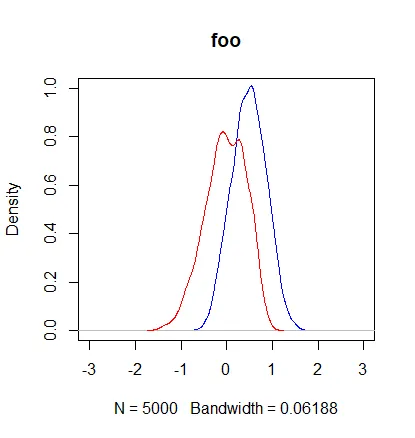你可以定义一个递归函数(调用自身的函数)。
f <- function(S, R, i=1, cm=NULL, res=NULL, ...) {
S <- rbind(cm, rdf[sample.int(nrow(rdf), 1), ])
cm <- colMeans(S)
res <- rbind(res, cm)
return(if (i < R) {
f(S, R=R, i=i + 1, cm=cm, res=res)
} else {
`rownames<-`(as.data.frame(res), NULL)
})
}
set.seed(42)
f(rdf[sample.int(nrow(rdf), 1), ], R=10)
你可能需要增加C语言栈大小。
但你也可以使用for循环。
R <- 10
res1 <- matrix(nrow=0, ncol=2)
set.seed(42)
for (i in seq_len(R - 1)) {
if (nrow(res1) == 0) {
res1 <- rdf[sample.int(nrow(rdf), 1), ]
}
S <- rdf[sample.int(nrow(rdf), 1), ]
res1 <- rbind(res1, colMeans(rbind(res1[nrow(res1), ], S)))
}
res1
这里是两个版本的快速基准测试(R=2K),递归似乎快了近一倍。
数据:
rdf <- structure(list(obs = c(0.376972124936433, 0.301548373935665,
-1.0980231706536, -1.13040590360378, -2.79653431987176, 0.720573498411587,
0.93912102300901, -0.229377746707471, 1.75913134696347, 0.117366786802848
), time = c(-0.353122822287008, 1.40925918161821, 1.69637295955276,
0.128416096258652, 0.376739766712564, 2.30004311672545, 2.20399587729432,
-2.53876460529759, -1.78897494991878, 0.558303494992923)), class = "data.frame", row.names = c(NA,
-10L))

@IRTFM,“Recall”并没有显着改变性能。但一个非常有趣的功能,如果您重命名递归函数,它可以使其继续工作。谢谢! - jay.sf